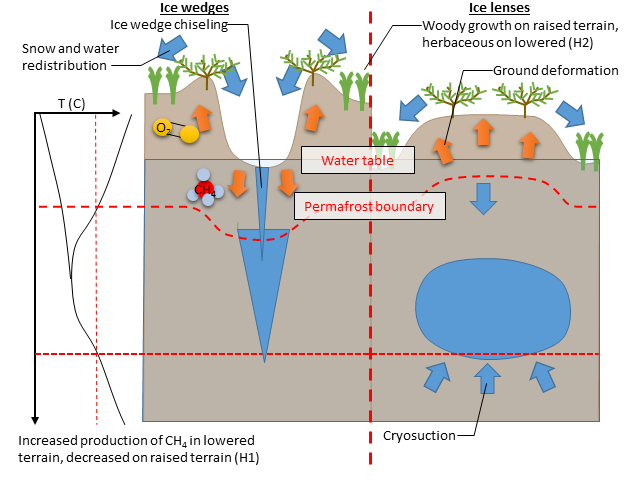Thermokarst pools, or irregularly spaced lakes common at high latitudes, can form when buried ice formations (known formally as ‘excess soil ice’) melts, which can trigger a feedback loop. These ponds are perfect locations for methane formation and carbon sequestration, and as more thermokarsts form due to rising temperatures at high latitudes we expect to see increased methane emissions. Boreal latitudes are renowned for their methane emissions, and this mechanism may cause relatively high increases in the amount of methane emitted.

However, permafrost formations come in all shapes and sizes and the exact response of these ecosystems to climate change is not yet clear. Our lab seeks to use model based approaches to forecast how specific ice formations may respond to shifts in the global climate cycle. We are using innovative models that model the ground deflection due to the growth and collapse of excess ice. These models use coupled thermodynamic, hydrologic, and vegetative modules to predict the ecosystem scale response.